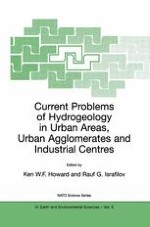Groundwater issues have generated worldwide concern in recent decades. The problems are numerous: too little groundwater, too much groundwater, groundwater contaminated by either saline water or a broad spectrum of industrial and domestic pollutants. Many urban groundwater problems are not unique to any one region, which is the thinking behind this book. Many of the case studies presented here have never before been described in English. Overall, the papers represent the work and experience of researchers and groundwater professionals who have worked on urban groundwater issues in developed and less-developed nations around the world. They reveal the magnitude and scope of the problem as well as identify future challenges, potential courses of action, and emerging technologies that offer hope for the future.
